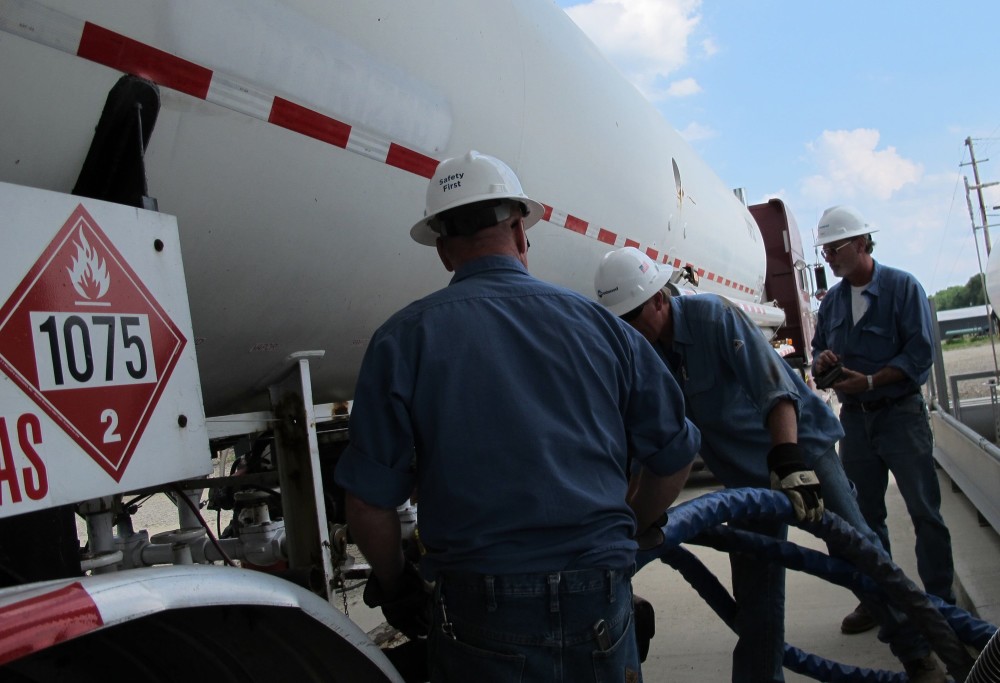By Corey Paul
Odessa American, Texas.
Jennifer Rice started six years ago in the oilfield on the drilling and production side. She helped oversee drilling on behalf of a mineral owner on a ranch, and later she moved into managing facilities for BHP Billiton Petroleum.
Often she was the only woman on the lease.
“You definitely have to have a personality to be able to do it,” Rice said. “You can’t take stuff from people, from the guys.”
Rice is part of a growing demographic of female oil and gas workers, but the field remains dominated by men. Still, she said she sees the impact of women in the industry at the job she landed in January as an engineering tech in the upstream unconventional arm of ConocoPhillips.
“It was uncommon for women to be out there,” Rice said. “And now I have several female friends that work as pumpers that are supervisors. My supervisor at Conoco in engineering . . . is female. It’s awesome.”
But Rice and a host of other women who work in the Permian Basin oil and gas industry see room for improvement. About 130 women gathered on Thursday in Midland at “Paint the Permian Pink,” a luncheon aimed at fostering more women working in the energy industry and helping them carve paths to success.
The keynote speaker was Katie Mehnert, a former health and safety executive at the supermajors BP and Shell who retired in 2014 to found Pink Petro, an industry social network that counts Halliburton and Shell as backers.
The event, at Teen Flow Ministry in downtown Midland, included a presentation about preventative women’s health care and a lunch of pink pancakes. But it focused mostly on business, and using Pink Petro to foster female employment in the oil and gas industry.
The idea of Pink Petro is to offer better mentorship opportunities and networking among women in the oil and gas industry, Mehnert said. Her ultimate goal is to boost the amount of women working in the industry.
Last year, the American Petroleum Institute released a study that found women make up about 19 percent of the oil industry workforce. That’s compared to a national economy where women make up nearly half of the overall workforce.
“There are more women entering the workforce with college educations, with degrees, but they are unaware of what the path is for them in the oil and gas industry,” Mehnert said. “I remember when I was working at Shell, I didn’t know what I could be in the industry. The path was not well defined. And if you look at the statistics, we are outnumbered four to one.”
The API study showed women account for a lower portion of upstream and midstream workers such as rig hands, accounting for about 16 percent of that workforce. The trade group predicted the historically low female share of those blue-collar jobs to grow less than in the management, business and financial areas.
The API projected women to account for about a third of the 16,000 jobs expected to be added in those areas by 2030.
One of the biggest obstacles Mehnert said she identifies is mentorship of women in the oil and gas industry by men or other women in senior roles.
Event organizer Kimberly Smith, a landman at Development Resources in Midland, said she hoped the women attending would find inspiration to gather and support each other professionally.
“They can get together whenever they want to,” Smith said. “Don’t let anything discourage them from encouraging each other.”
One of Thursday’s attendees, Olga Nedorub said she started to pursue geophysics almost on a lark. The Russian artist landed an internship in Houston and now works at Apache in Midland.
“It’s a challenge, but at the same time I love to tell people when they ask ‘What do you do?’ that I’m a geophysicist,” Nedorub said. “Some people don’t even know what that is. They don’t expect a woman to be in such a demanding scientific field.”
Mehnert argues the industry needs to start targeting young people, especially women, at earlier ages. She referred to what is commonly called The Great Crew Change — the age gap between retiring baby boomers in the oil industry and the younger, less experienced workers who are replacing them during the shale age.
“We weren’t hiring people after the 80s and nobody was really interested,” Mehnert said. “And now we have more women coming into the workplace and wanting significant roles. I talk to women all the time about they want to be out in the field. They want to have the same kind of jobs that their male counterparts do.”














































































































































































































































































































































































